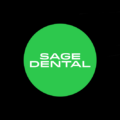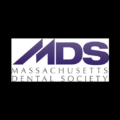INTRODUCTION
For osseointegration of dental implants to occur, a proper bone site needs to be created. Teeth often need to be extracted prior to implant placement. Sometimes, immediate implants can be positioned into extraction sites. However, if there is significant bone loss, the practitioner may decide to do socket preservation and use a graft material. Simple socket grafting has been shown to maintain bone contours better than no grafting.1
There are many grafting products available today, including allograft, (a graft from a human source), xenograft (a graft from another species), and alloplastic (such as tricalcium phosphate, hydroxylapatite, ceramics, and polymers) materials. The “gold standard” for grafting products are considered to be autogenous ones, or bone harvested from the patient.2 However, they historically have not been very practical for most clinicians or their patients, as the procedure requires a second surgical site.
Primary and Secondary Implant Stability
When preparing for dental implant placement in preparation for eventual implant-retained prostheses, it is imperative to have initial mechanical or primary stability of the implant(s). This initial stability is created by the quantity and quality of available bone. Of course, the design of the implant threads and placement precision has much to say about initial stability. Following implant placement, secondary stability is created by a physiologic response. Integration normally occurs over a period of time, as osteoclasts invade the bone around the titanium implant and osteoblasts lay down new bone. It is reported that, in most circumstances, the stability of an implant is at its least at 2 to 4 weeks after implantation due to reorganization of bone.3
 |
 |
| Figure 1. Preoperative view of unaesthetic and non-restorable mandibular teeth. | Figure 2. The teeth were atraumatically removed to maintain the facial plate of bone. The coronal portions of each tooth were then sectioned off to remove any restorations, decayed structure, and enamel. (Note: Endodontically treated teeth should not be utilized for this procedure.) These extracted teeth were then placed into the Smart Dentin Grinder (KometaBio) to create autogenous graft material. |
 |
 |
| Figure 3. Occlusal view of the extracted tooth sockets. | Figure 4. An envelope flap was created using an Orban Knife. Both facial and lingual tissue were elevated, exposing the contour of bone and socket sites. |
 |
 |
| Figure 5. The Smart Dentin Grinder is a self-contained unit, consisting of a motor and a disposable chamber. | Figure 6. The scrubbed and dried extracted teeth were placed into the chamber of the Smart Dentin Grinder, where they were quickly ground up (3 seconds) and sorted (20 seconds) to achieve the required particulate size. |
Autografts
The use of autografts (bone from the patient’s own body) is osteoconductive, serving as an excellent scaffold for bone creation. These grafts are also osteoinductive due to their high level of growth factors. The biggest issue with using an autograft material is that the bone is harvested from another site in the patient’s body, creating a secondary surgery in the hip or rib. Although these grafts are often not practical, they do provide the most predictable results.4 This is why I was interested in learning a method to create an autogenous graft from extracted teeth that did not require a second surgical site. I was also interested in this procedure since studies have shown that mandibular sites grafted as described are ready for implant placement in as little as 7 weeks, and maxillary sites are ready in 3 months.5 This is a large benefit to clinicians and patients alike.
In this clinical case report, we will focus on the clinical protocol involving the use of the Smart Dentin Grinder (KometaBio), which was used to create autogenous dentin graft particulate from the patient’s extracted teeth. It consists of a simple 5-step process that takes approximately 15 minutes, with most of the steps being done by the chairside dental team while the clinician prepares for the graft procedure. The teeth that are to be used in this process are extracted, and all artificial materials, such as composites and amalgams, are removed. Endodontically treated teeth with gutta-percha are not to be used. Traces of decay will not hinder this process, as it will be dissolved in the cleaning and rinsing steps.
CASE REPORT
Clinical Protocol
First, the non-restorable teeth (Figure 1) were atraumatically removed, maintaining the facial plate of bone. To expedite the healing process, and to remove the enamel that would not resorb, the coronal portions of the teeth were simply removed with a bur (Figure 2). The edentulous site (Figure 3) was prepared for socket preservation using an Orban Knife. Facial and lingual envelope flaps were created for easy visualization of the socket sites and any defects in the bone contour (Figure 4). A bone file was used to flatten the surface and to eliminate any bony spicules.
 |
 |
| Figures 7 and 8. The unit automatically generated 250 to 1,200 µm of particulate autogenous graft. The particulate was then cleaned using the Dentin Cleanser (KometaBio), followed by a Dentin Wash (KometaBio). About 10 cc of particulate was created from these teeth. |
 |
 |
| Figures 9 and 10. The prepared autogenous graft material was placed into all the sockets. |
A disposable chamber and blade apparatus were attached to the base of the Smart Dentin Grinder (Figure 5). Then the scrubbed and air-dried roots were placed near the blades (Figure 6). In a short 23 seconds, the roots were ground and sorted to a specific range of particulate size, collecting in the catch drawer (Figure 7). Once the grinding process was completed, the newly created autogenous graft material was placed in the provided glass jar, along with Dentin Cleanser (KometaBio) (Figure 8). This cleanser, a high pH (very basic) sodium hydroxide in 20% ethanol, is used to cleanse the particulate for 10 minutes to eliminate bacteria and any organic material. After the particulate completed soaking, the cleanser was removed. This is done by pouring out the excess liquid or by using sterile absorbent gauze. Next, a Dentin Wash (KometaBio), consisting of a phosphate-buffered saline, was poured onto the tooth particulate for 3 minutes. Following this second soaking, as much of the liquid wash as possible was removed by pouring out the excess, and the rest was absorbed with gauze.5 The graft was now ready for use.
The particulate graft was easy to transfer to the socket site because it was slightly hydrated. The sockets were packed firmly (not condensed) with the autogenous graft (Figures 9 and 10). To protect the grafted site from invagination of epithelium, a resorbable, long-lasting membrane (EPI Guide [Curasan]) was passively positioned to extend beyond any defect on both the facial and lingual aspects (Figure 11). The surgical site was sutured using Vilet 3.0 FS-2 (Implant Direct) (Figure 12). This material is made from polyglactin, which imparts high strength and provides minimal tissue inflammation.
 |
 |
| Figure 11. A long-lasting resorbable membrane (EPI Guide [Curasan]) was used to cover the site to protect the graft from epithelial invagination. | Figure 12. The flap was sutured closed using Vilet 3.0 FS-2 (Implant Direct). |
 |
 |
| Figure 13. Following suture removal, the tissue over the grafted site healed well. | Figure 14. A postoperative CBCT analysis (Vatech Green PaX-i3D [Vatech America]) at 8 weeks showed the formation of new bone in the socket sites. |
Clinical studies have shown that this autogenous graft material, created from tooth roots, has the same chemical and biological composition as bone. The material is osteoconductive, serving as a scaffold for the osteoblasts. It is also osteoinductive since it stimulates progenitor cells to differentiate into osteoblasts. Bone morphogenic proteins (BMPs) are the cell mediators in this process. New osteoblasts are formed, resulting in faster integration. Finally, the graft product is also osteogenic and, thus, rapidly differentiates into bone. The site will heal quicker, with less resorption.5
The dental implant chosen here to eventually support an implant-retained prosthesis replacing the missing mandibular anterior teeth was the SLA Active implant (Straumann). This implant choice was made because of its ability to predictably achieve quicker integration and potential loading of the final prosthesis. The SLA Active implant was sandblasted and acid etched in a nitrogen atmosphere and then stored in an isotonic sodium chloride solution. This results in a chemical activation of the surface and enhanced osteoblast activity. Reports indicate that the SLA Active implant integrates in 6 to 8 weeks.6
Following 8 weeks of integration of the dentin graft particulate, the edentulous site was evaluated for proper healing. Tissue health was found to be very acceptable (Figure 13). The patient had been wearing a removable transitional partial appliance. A postoperative CBCT analysis (Vatech Green PaX-i3D [Vatech America]) showed the formation of new bone in the socket sites (Figure 14).
 |
 |
| Figure 15. Prior to dental implant placement, the residual ridge was evaluated. It was apparent that the graft had been replaced by viable bone at an accelerated pace (compared to allograft material). |
Figure 16. Four BLT SLA Active implants (Straumann) were strategically placed in preparation for an eventual 8-unit implant-retained prosthesis. Following implant placement, the site was re-sutured. Final impressions would be taken at approximately 8 weeks following implant placement. |
 |
 |
| Figure 17. Following integration of the implants, the Straumann impression copings were seated to place and verified with a digital radiograph. |
Figure 18. Healthy tissue cuffs were created with the use of healing abutments that penetrate through soft tissue during healing. |
The crestal bone was evaluated. A flap was made facially and lingually to expose the site (Figure 15). Four BLT SLA Active implants (Straumann) were strategically placed in preparation for an eventual 8-unit implant-retained prosthesis (Figure 16). Bone quality and quantity were found to be excellent. Bone density appeared normal, and bleeding occurred during the osteotomy preparations. Following implant placement, the site was re-sutured. The plan was to take the final impressions at approximately 8 weeks following the placement of the implants.
Straumann BLT impression copings were inserted into the implants (Figure 17), and complete seating was verified with a digital radiograph. Healing abutments were placed into the implants to create a healthy tissue cuff and to eliminate the need to anesthetize the patient to uncover the implants in subsequent visits. Figure 18 illustrates the healthy tissue contours upon removal of the healing abutments.
The final screw-retained zirconia prosthesis (Michigan Implant) was torqued to 35 Ncm. Note the ideal position of the access holes that were created because of proper placement of the implants (Figure 19). The access holes were covered over with a composite resin (TPH3 [3M]) (Figure 20).
CLOSING COMMENTS
Bone grafting and simple socket preservation techniques are important and popular methods of maintaining the quality and quantity of bone. This process may be important if dental implants are to be considered in the future.
Implant dentistry certainly has become a viable alternative to conventional dental techniques. Our patients request permanent solutions to their dental needs, and implants are an excellent method of achieving their goals. In the past, graft procedures were not always predictable or accepted by the patient. However, with the advent of high-quality materials and an understanding of the need to protect any graft from invagination of epithelial tissue, the process has become routine and very predictable.
 |
 |
| Figures 19 and 20. The final screw-retained zirconia prosthesis (Michigan Implant) was torqued into place at 35 Ncm. Note the ideal position of the access holes created because of proper positioning of the implants. The access holes were covered over using composite resin (TPH3 [3M]). |
Our choice of materials may seem excessive, but the grafting option presented herein can generate excellent clinical results, as well as increased patient acceptance, since it is an autogenous graft that does not require a separate surgical site. For my larger cases, when I am grafting multiple socket sites, a dentin graft is also very economical, based on the per-use cost and the amount of particulate generated. It produces excellent clinical results and saves money when compared to other available graft options.
Autogenous bone grafts have long been considered the best approach to achieving success. However, this required harvesting bone from another site in the oral cavity or part of the body and was not that practical. We now have a process of creating an autogenous graft particulate using the patient’s own prepared teeth, which is certainly something to consider when grafting in preparation for dental implants.
References
- Horowitz R, Holtzclaw D, Rosen PS. A review on alveolar ridge preservation following tooth extraction. J Evid Based Dent Pract. 2012;12(suppl 3):149-160.
- Misch CM. Maxillary autogenous bone grafting. Dent Clin North Am. 2011;55:697-713.
- Javed F, Ahmed HB, Crespi R, et al. Role of primary stability for successful osseointegration of dental implants: factors of influence and evaluation. Interv Med Appl Sci. 2013;5:162-167.
- Misch CE, Dietsh F. Bone-grafting materials in implant dentistry. Implant Dent. 1993;2:158-167.
- Binderman I, Hallel G, Nardy C, et al. A novel procedure to process extracted teeth for immediate grafting of autogenous dentin. Journal of Interdisciplinary Medicine and Dental Science. 2014;2:1000154.
- Rupp F, Scheideler L, Olshanska N, et al. Enhancing surface free energy and hydrophilicity through chemical modification of microstructured titanium implant surfaces. J Biomed Mater Res A. 2006;76:323-334.
Dr. Kosinski is an affiliated adjunct clinical professor at the University of Detroit Mercy School of Dentistry (Detroit Mercy Dental) and is the associate editor of the AGD journals. He is a past president of the Michigan Academy of General Dentistry. Dr. Kosinski received his DDS from Detroit Mercy Dental and his Mastership in Biochemistry from the Wayne State University School of Medicine. He is a Diplomate of the American Board of Oral Implantology/Implant Dentistry, the International Congress of Oral Implantologists, and the American Society of Osseointegration. He is a Fellow of the American Academy of Implant Dentistry and received his Mastership in the AGD. He has received many honors, including Fellowships in the American and International Colleges of Dentists and the Academy of Dentistry International. He is a member of Omicron Kappa Upsilon and the Pierre Fauchard Academy. He was the Detroit Mercy Dental Alumni Association’s Alumnus of the Year in 2001. In 2009 and 2014, he received the AGD’s Lifelong Learning and Service Recognition award. He has published more than 190 articles on the surgical and prosthetic phases of implant dentistry. He can be reached at (248) 646-8651, via email at drkosin@aol.com, or via the website smilecreator.net.
Disclosure: Dr. Kosinski reports no disclosures.
Related Articles
A Sequential Approach to Implant-Supported Overdentures
Tooth Extractions and Bone Grafting
A Simple and Cost-Effective Socket Preservation Technique











